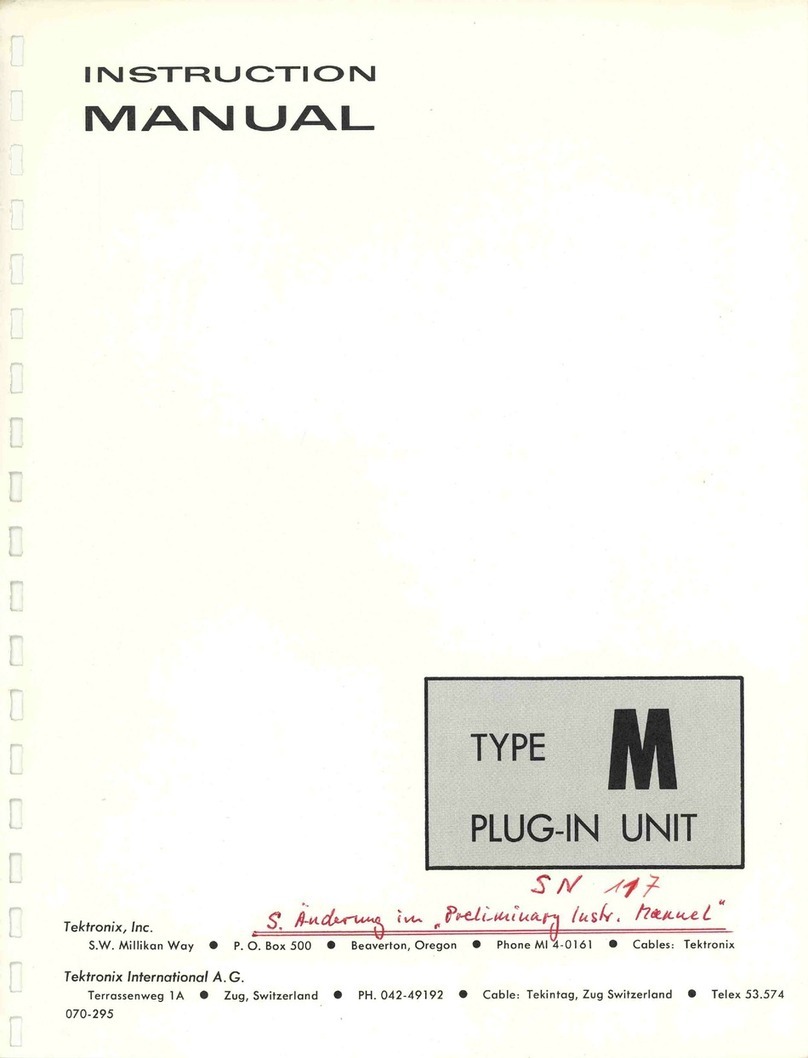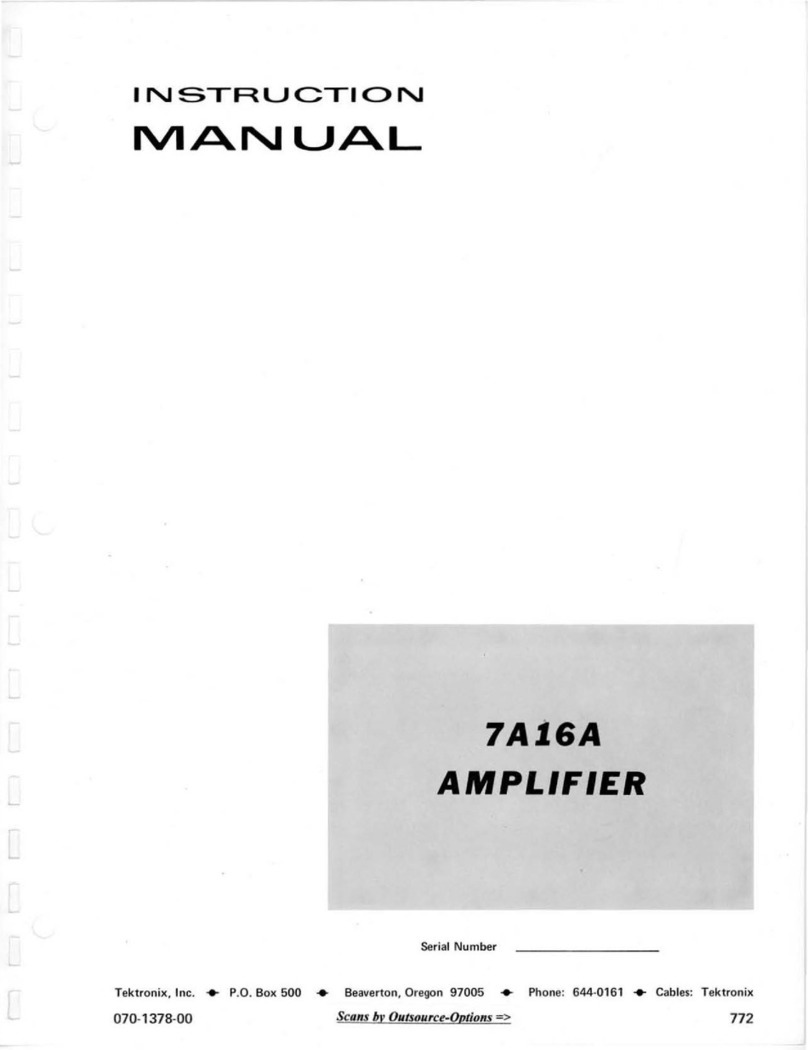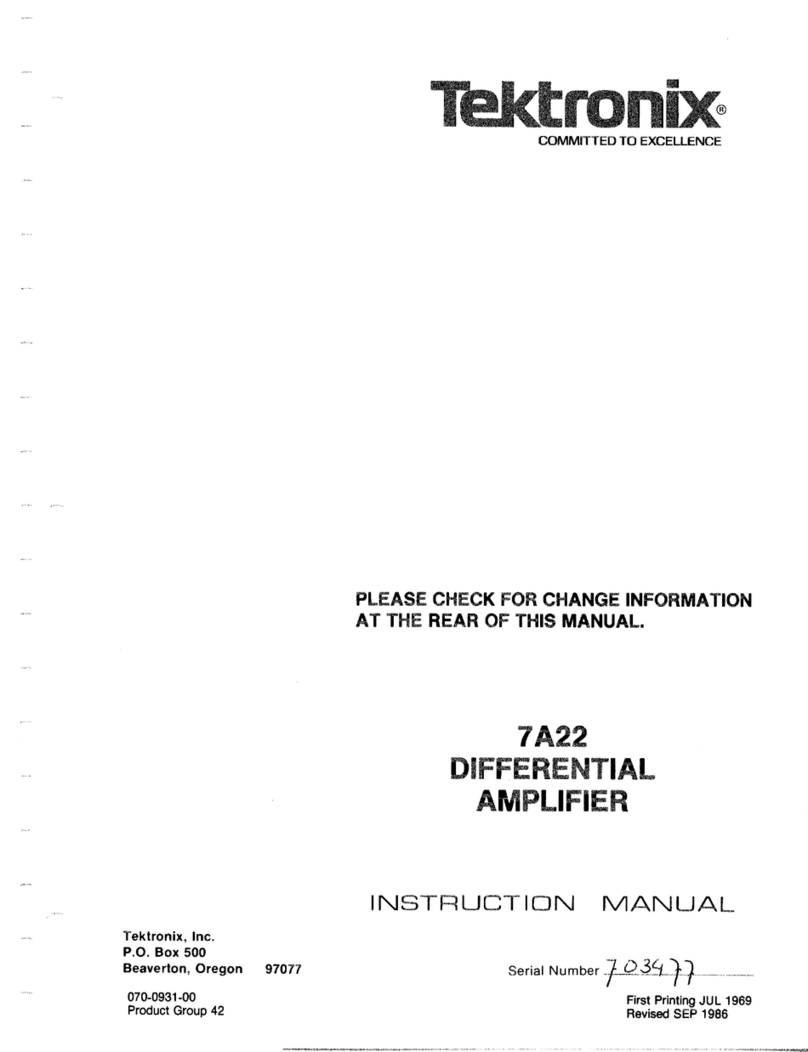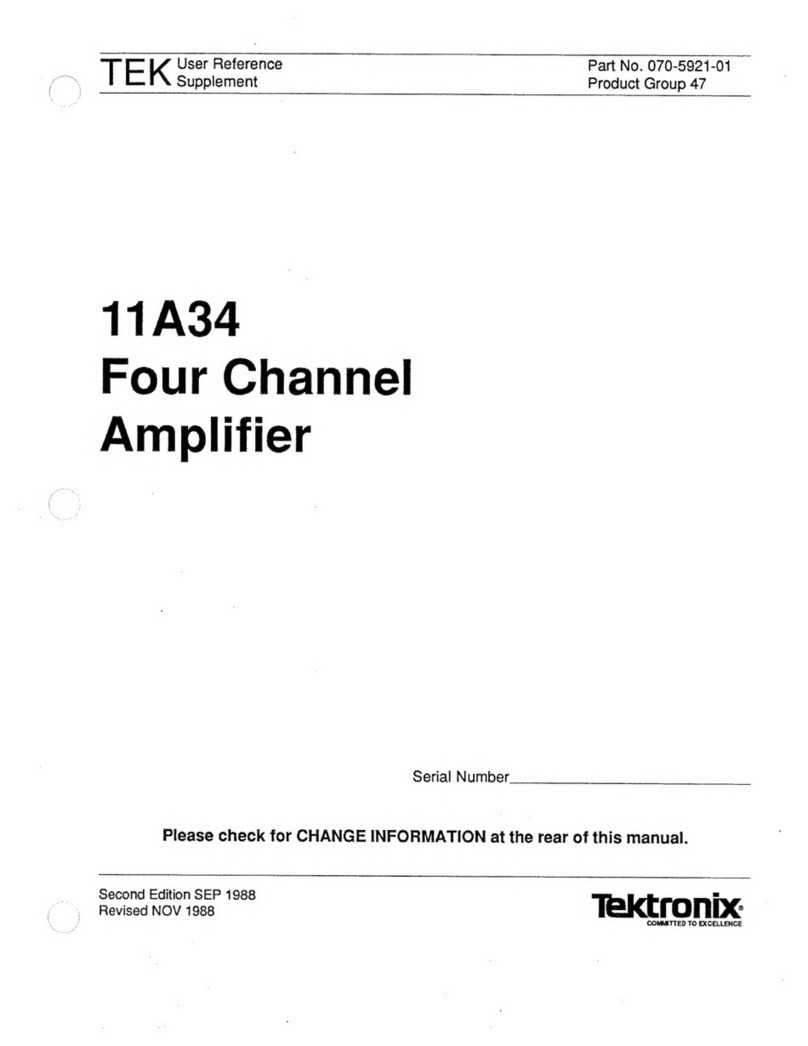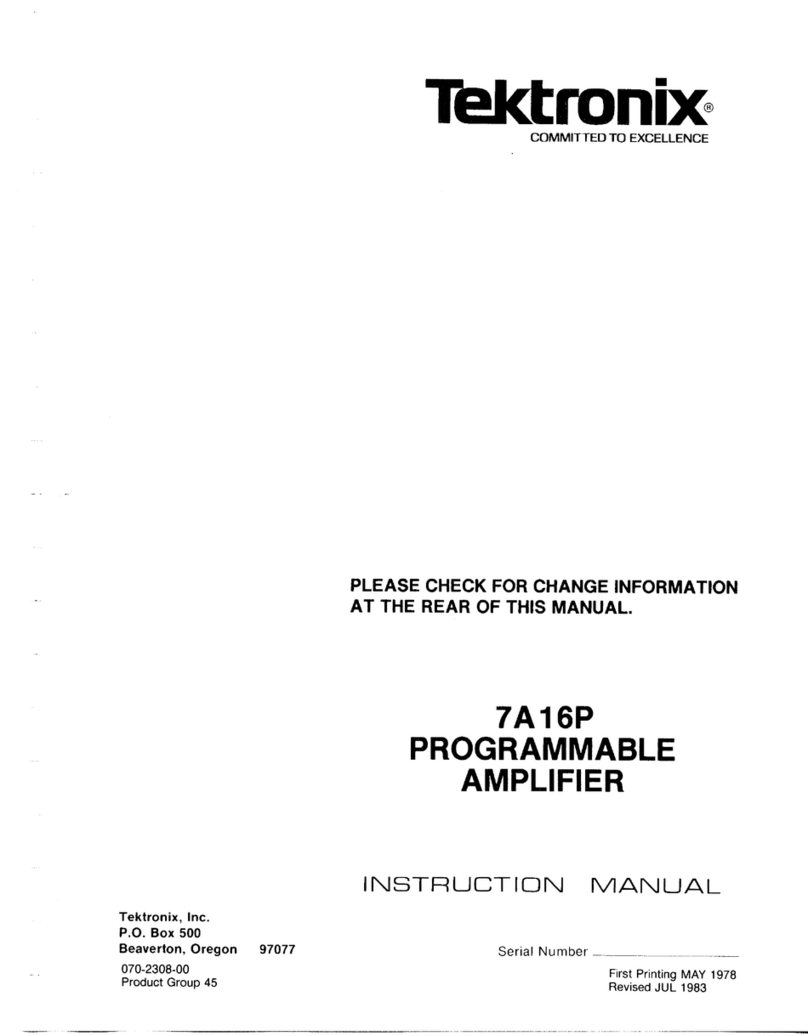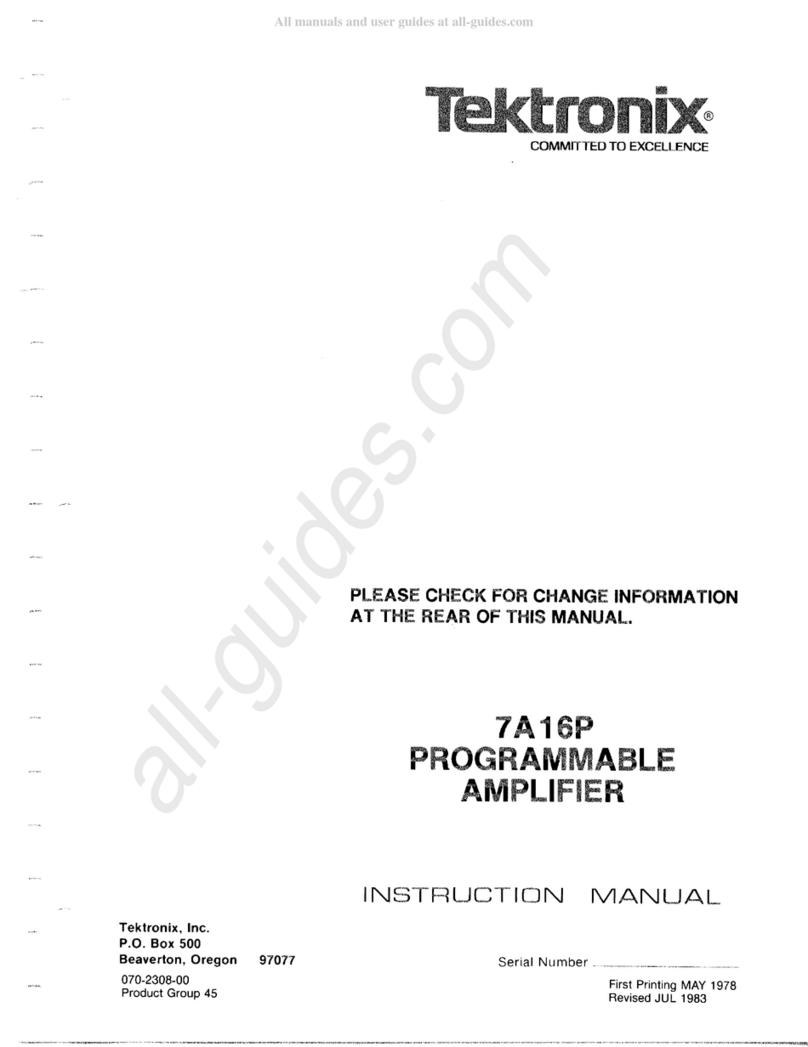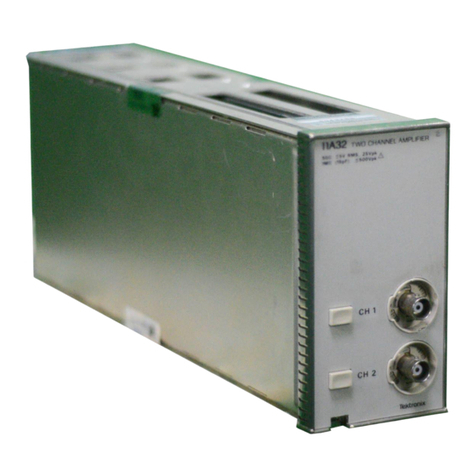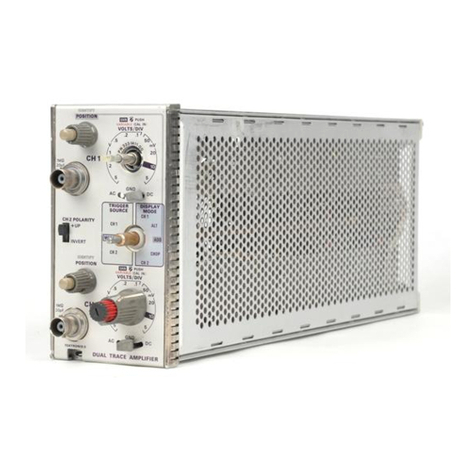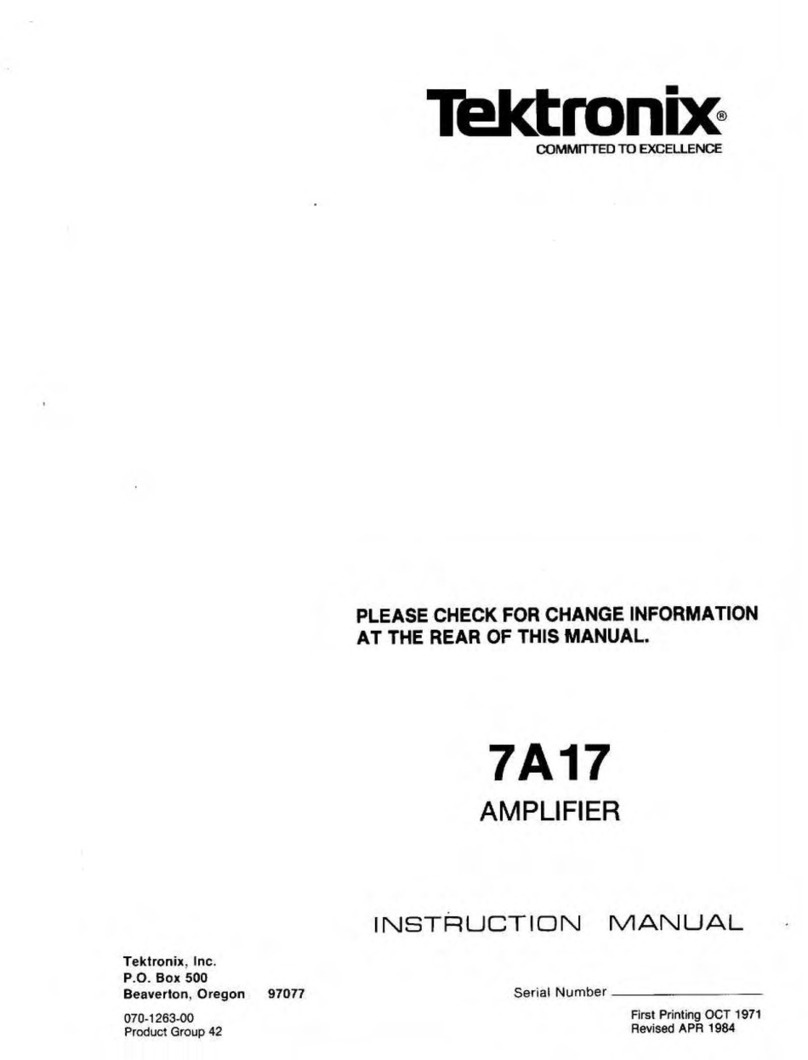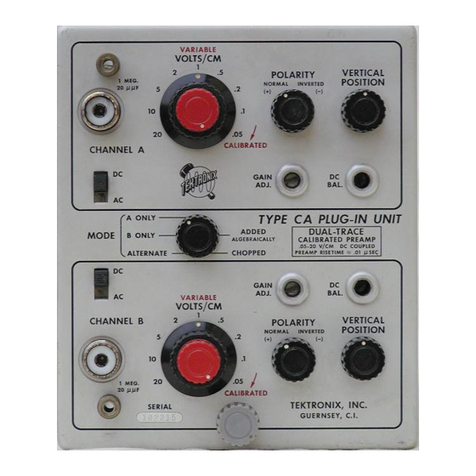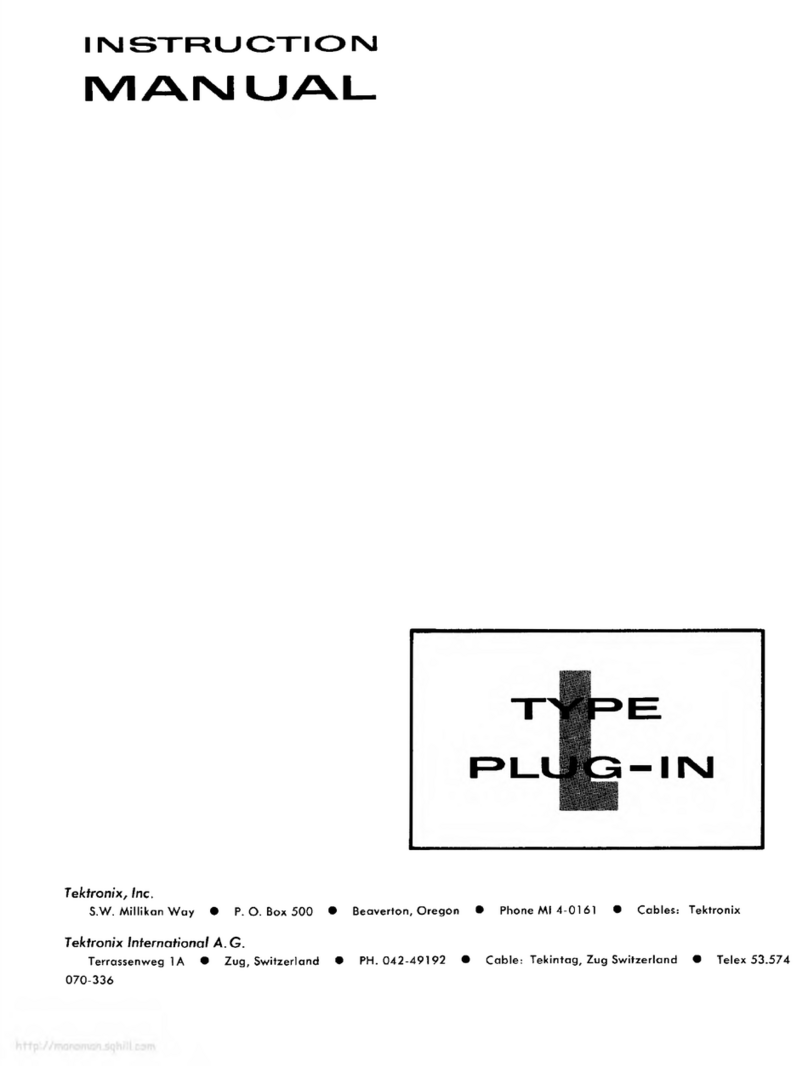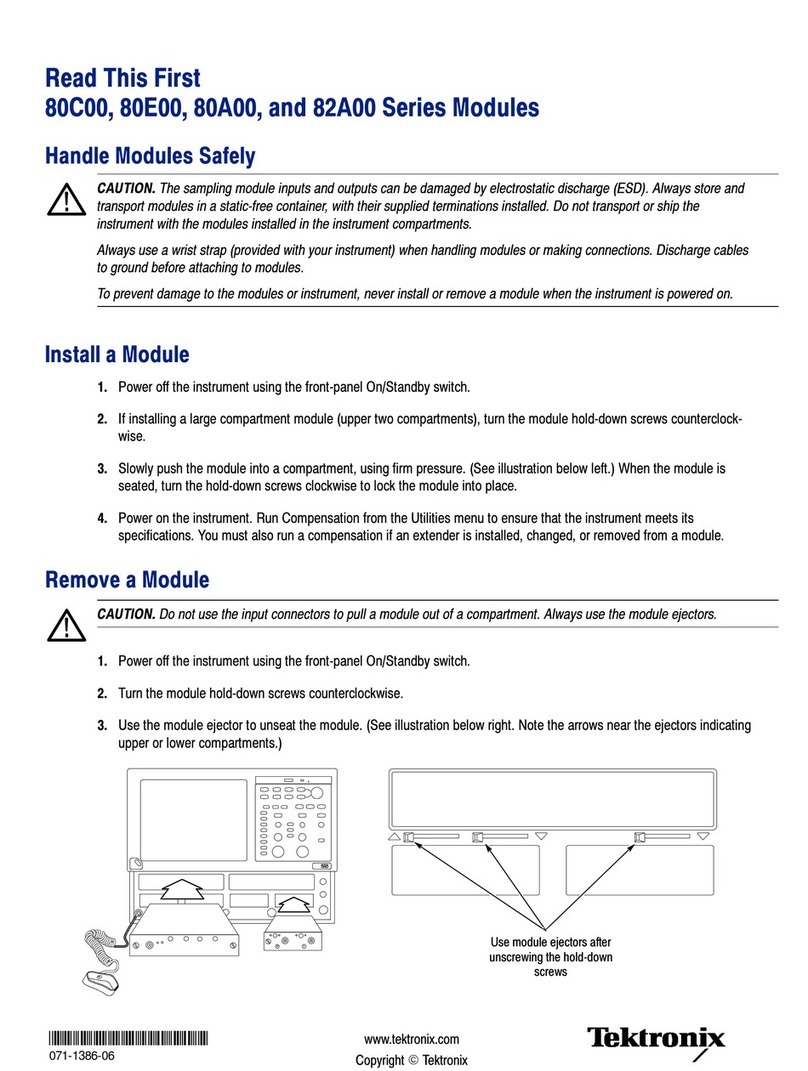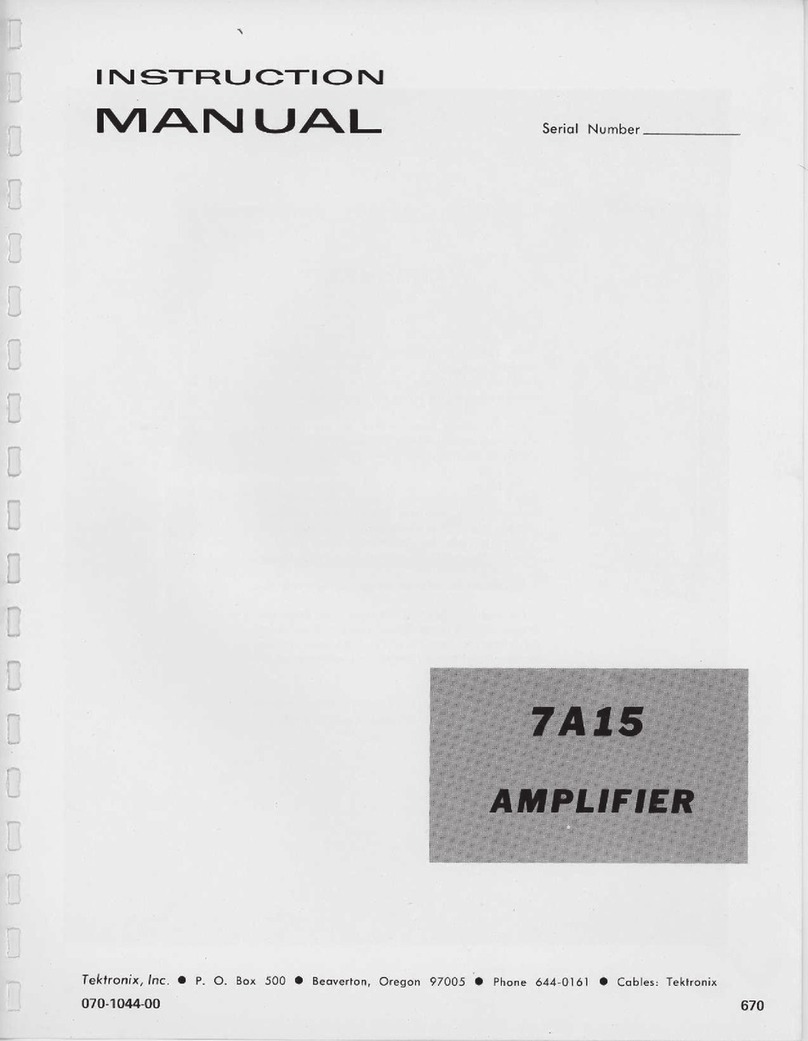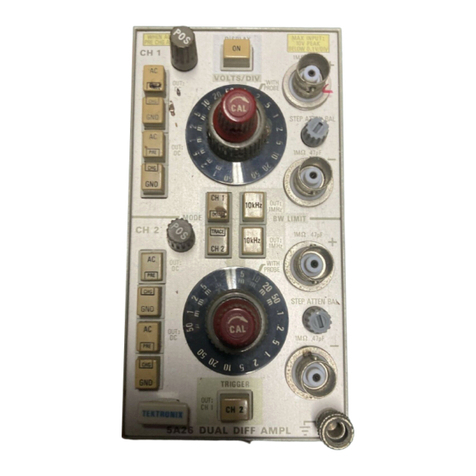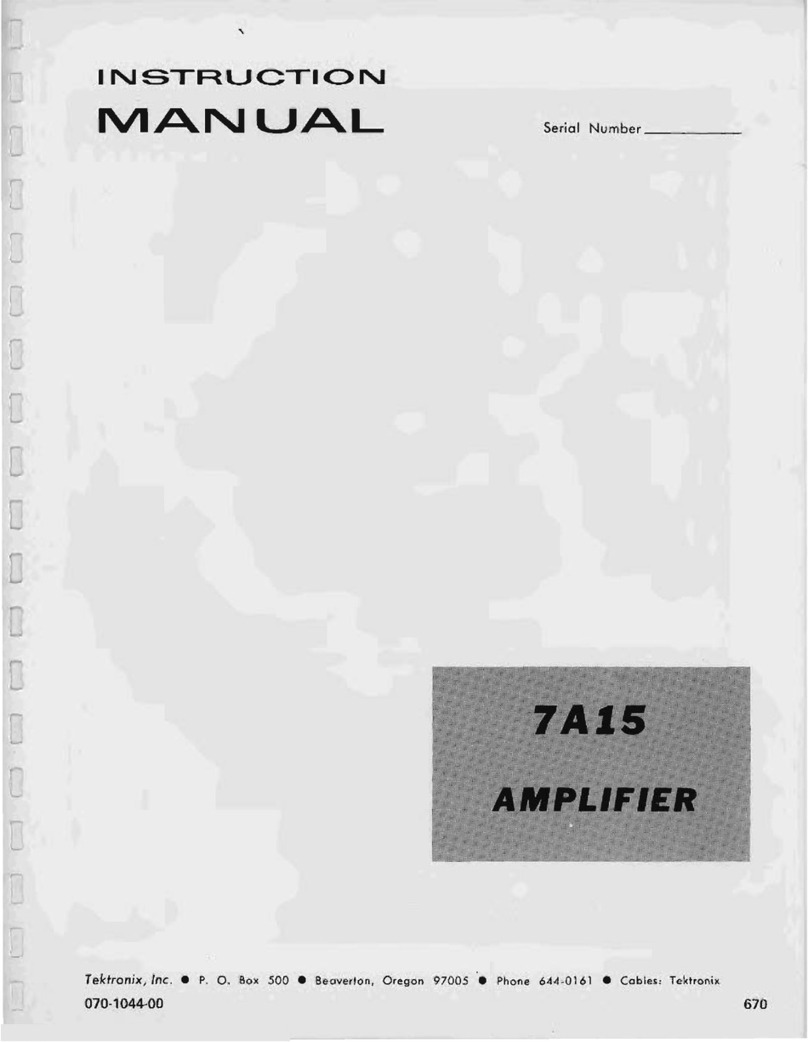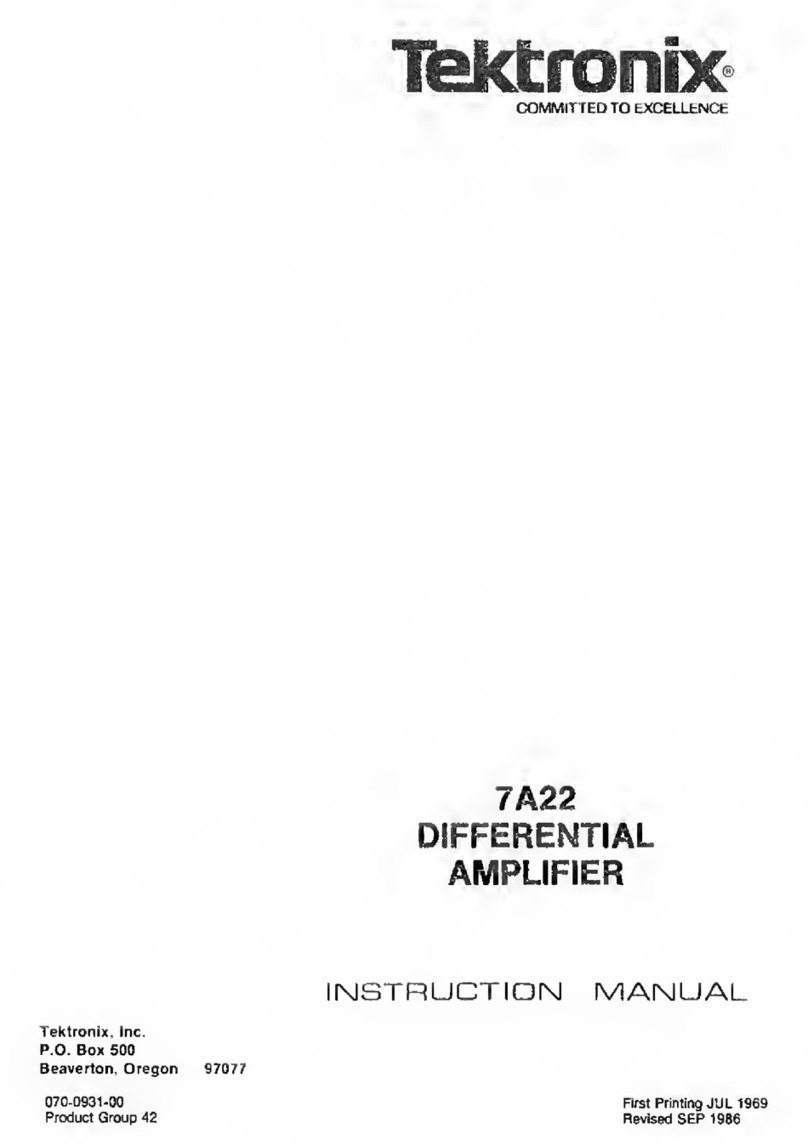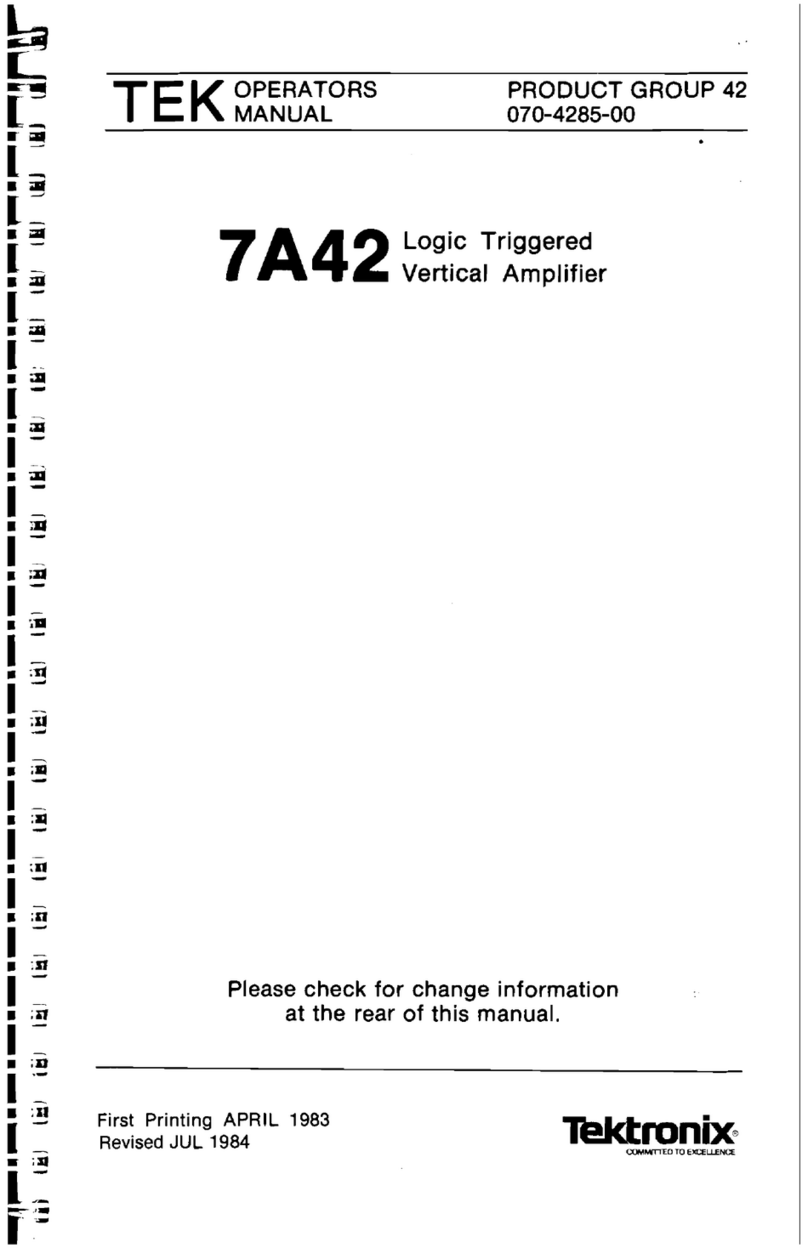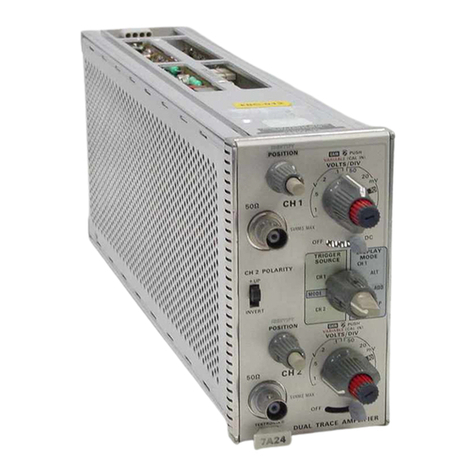Section 1—AM 502
OPERATING
INSTRUCTIONS
INTRODUCTION
Description
The AM 502 i$ adc-couple<j differential amplifier with
excellent common-mode rejection capabilities and high
gain for low voltage measurements. The dc offset capabili-
ty permits nulling up to 1volt dc, so that low level, low
frequency signals impressed on adc level can be
amplified without the degradation often introduced byac
Input coupling. High and low frequency -3d6 points can
be selected at the front panel to suit the application. Signal
inputs and outputs are available at the rear connector as
well as at the front panel. Afront panel lamp indicates
most overrange conditions of excessive input signal,
excessive gain, or excessive offset.
The input circuit can be represented by approximately
1megohm to ground paralleled by approximately 47
picofarads. The Input impedance can be raised to about
200 megohms with the removal of ajumper.
Overload protection is provided by fuses In series with
the input which open when largeamountsof current flow
due to overloading conditions.
ASTEP GAIN DC BALANCE control iS provided to
adjust for zero shift as the gain switch is changed from one
position to another.
The DC OFFSET COARSE and FINE controls give
offset up to ±1 volt dc potential difference at the input
connectors. The amplifier internal bias is changed to
accomplish the offset. The LF -3 dB switch must be In the
DC OFFSET position to actuate these controls.
The HF -3 dB switch is used to reduce the upper
bandwidth limit as necessary to improve the signal-to-
noise ratio when using the AM 502 in low-frequency
applications. The LF -3 dB control increases the lower
bandwidth frequency.
Use of the pre-charging feature prevents surge
currents, due to charging the ac coupling capacitor, from
damaging the circuit under test.
Installation and Removal
Turn lh» powermodule offbefore inserting the plug-
in: otherwise, damage may occur to the plug-in
circuitry. Because of the high current drawn by the
AM 502, it is also recommended that the power
module be forned off before removing the AM 502.
Refer to Fig. 1-1. Check to see that the plastic
barriers on the interconnecting jack of the selected
power module compartment match the cut-outs in
the AM 502 circuit board edge connector.
Align the AM 502 chassis with the upper and lower
guides of the selected compartment. Push the module in
and press firmly to seat the circuit board in the inter-
connecting jack.
To remove the AM 502. pull on the release latch located
in the lower left comer, until the interconnecting jack
disengages and the AM 502 will slide out.
Controls and Connectors
Refer to Fig. 1-2. Even though the AM 502 is fully
calibrated and ready to use. the functions and actions of
the controls and connectors should be reviewed before
attempting to use it. Pull the Power switch on the power
module to apply power to the AM 502. The POWER
indicator light indicates when power is applied to theAM
502
OPERATING CONSIDERATIONS
Overheating
The AM 502 is designed to operate at an ambient
temperature from 0” to -^-SO^C. However, when operating
several power supplies In amulti-plug-in power module,
especially at low output voltages, or when operating close
to other heat-producing equipment, internal temperature
may exceed safe limitsandactuatea thermal cutout in the
power module. Refer to the power module instruction
manual for more complete information.
REV DSEP 1980 M
